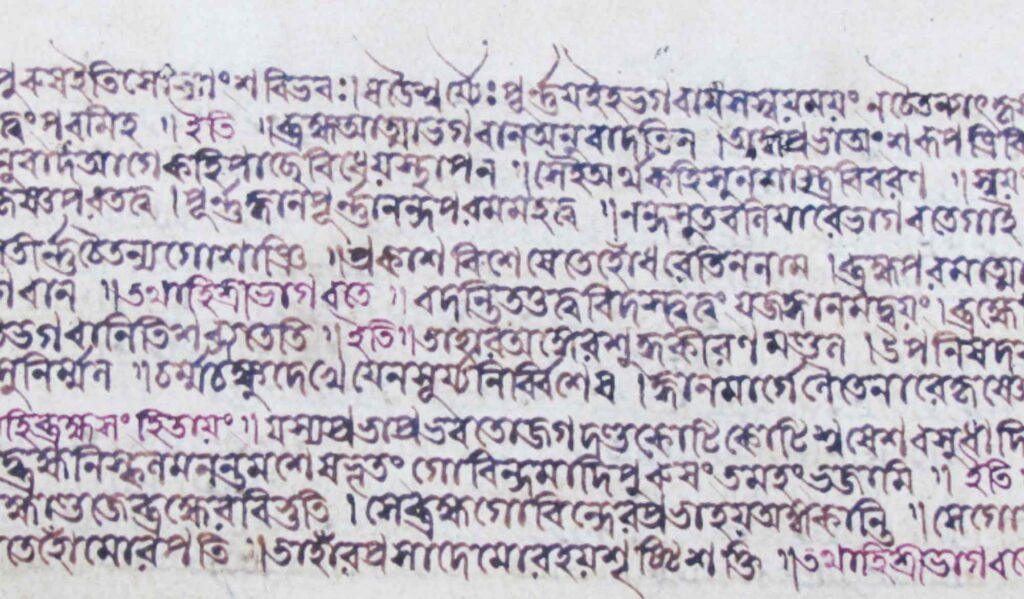Vaiṣṇava Siddhānta Mālā Part 1 – Chapter Eight
Kṛṣṇāṅghri-lābhaī – Mokṣa
(Liberation is the Attainment of Kṛṣṇa’s Lotus Feet)
Question: How many different kinds of mokṣa are there?
Answer: Salokya (attaining the same planet as the Lord), sārṣṭi (attaining transcendental opulence), sāmīpya (being close to the Lord), sārupya (attaining a similar divine form as the Lord) and sāyujya (merging into the Lord’s effulgence) are said to be the kinds of mokṣa. Amongst these, sāyujya-nirvāṇa and the attainment of ekātva (becoming one with the Supreme) is considered to be mokṣa, but this is just the delusion of nirviśeṣavāda. The jīva should never think about this. When this is considered from the perspective of Brahman, it seems like a type of perfection. When simultaneous bheda and abheda has been proven to be true, then abhedavāda, which eliminates difference, cannot stand on its own.
Question: So what is real mokṣa?
Answer: Attaining the shelter of Śrī Kṛṣṇa’s feet with one’s spiritually pure form is said to be mokṣa.
Question: Why is attaining the shelter of Śrī Kṛṣṇa’s feet said to be mokṣa?
Answer: Attaining the shelter of Śrī Kṛṣṇa’s feet and freedom from contact with matter happen simultaneously. If one does this even a little, one achieves the result of mokṣa. It is determined that the bliss of drinking the nectar of Kṛṣṇa’s feet is the eternal result. Therefore, what else could be called mokṣa?
Question: Kindly give an example.
Answer: A lamp is lit and darkness disappears simultaneously. The removal of darkness refers to impersonal mokṣa. The light of the lamp refers to the nectar of Kṛṣṇa’s feet. The light of that lamp is eternal, and the destruction of darkness is not, since it only persists for some time, while the illumination from that light is an eternal principle.









